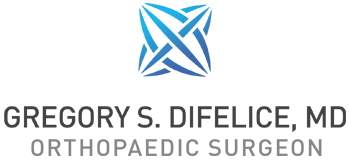Could An ACL Preservation Treatment Correct Your Knee Injury?
Could An ACL Preservation Treatment Correct Your Knee Injury? https://gregorysdifelicemd.com/wp-content/uploads/2020/09/GettyImages-1172667467.jpg 800 600 Dr Gregory Difelice New York | Sports Medicine Surgeon Paramus | NJ https://gregorysdifelicemd.com/wp-content/uploads/2020/09/GettyImages-1172667467.jpgFinding The Right Solution For Your Knee Injury: ACL Preservation
If you maintain an active and healthy lifestyle, bumps and bruises along the way are fairly predictable. However, when you consider the assortment of traumas that one could sustain, there’s hardly a bigger blow than that of an ACL injury.
Despite its notoriety as an injury that requires invasive surgery and a lengthy recovery period, we are partial to a more efficient route to recovery. For the past 12 years, Dr. Gregory DiFelice has developed and refined a procedure to help preserve his patients’ native tissues as an alternative to what has commonly been the only option for an ACL tear to date: a complete ligament reconstruction. Reconstruction has been the gold standard treatment for ACL injuries of all magnitudes for the past three decades, however this “one size fits all” treatment approach has significant limitations.
The “one size fits all” approach
This “one size fits all” approach involves full ligament reconstruction, using either your own tissue (autograft) or donor tissue (allograft). According to Dr. DiFelice, the issue with this approach is that not everyone needs a full reconstruction, and in certain cases you may be sacrificing reasonably healthy native ligament and biology. As his published research has shown, close to 40 percent of the ACL injuries may be appropriate candidates for ACL preservation. This means that he may be able to save most, or all, of the native ligament, and potentially not need a graft at all.
Who is eligible?
Eligibility is dependent on the type of tear the patient has endured and the quality of the tissue that remains. While the MRI can give a reasonable estimate of the type of tear, ultimately this can only be determined at surgery. ACL Preservation is a published treatment algorithm that is based on tear type and tissue quality. When we go to surgery, there are, in general, three possibilities with the goal of performing the smallest surgery to achieve the highest likelihood of an excellent patient outcome:
Primary ACL Repair – The perfect tear
If the ACL tears cleanly off of the bone, or very close to it, known as proximal avulsion tears, then simple reattachment of the ligament is possible in a large majority of patients. An injury that is more commonly seen amongst skiers, this repair is considered a “small” ACL surgery, as the recovery time is greatly reduced. Should there happen to be a reinjury at some point, then a straightforward reconstruction would still be a viable option despite the previous repair.
ACL Augmentation – The almost perfect tear
If the ACL tears in such a way that it does not quite reach back to the bone, then we will repair what we can of the native ACL, but it will be augmented with the placement of a smaller graft to bridge the gap between the bone and the remnant. ACL Repair with Augmentation is considered the “medium” ACL surgery. Saving a large amount of ligament remnant means that a smaller graft can be used as compared to a total reconstruction. Again, should reinjury occur, an ACL reconstruction is still an option.
ACL Reconstruction – The not so perfect tear
Known as the “large” ACL surgery, this option is usually our last resort. If the tissue tears in the middle and is beyond preservation, or if it is a revision setting with little native tissue left, then an ACL reconstruction becomes necessary using a larger autograft or allograft. This is the largest of the surgical option and carries with it the longest recovery.
Our goal will always be to approach ACL injury with more customized solutions. Over the past 12 years, it has become clear that one size does not fit all. With ACL Preservation, eligible candidates will have the opportunity to protect and salvage the biology, blood supply, and nerve endings of their native ligaments which remain. Using the Preservation First ™ approach, Dr. DiFelice will provide you with a spectrum of surgical options depending on the degree of injury. To learn more please visit www.gregorysdifelicemd.com or contact the office of Dr. DiFelice 212-746-4993.

